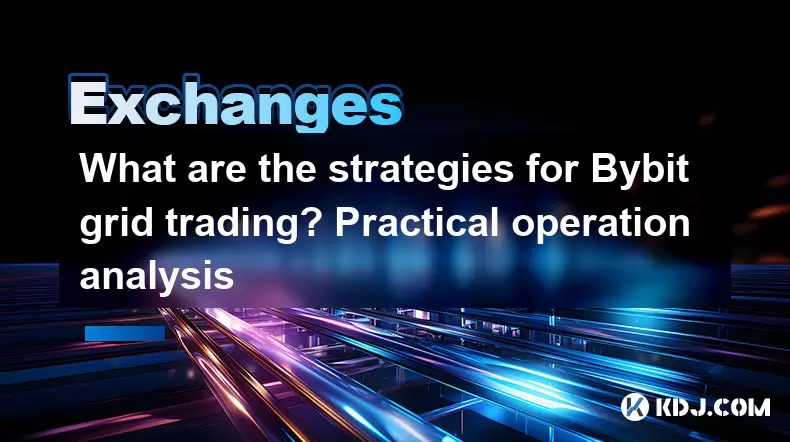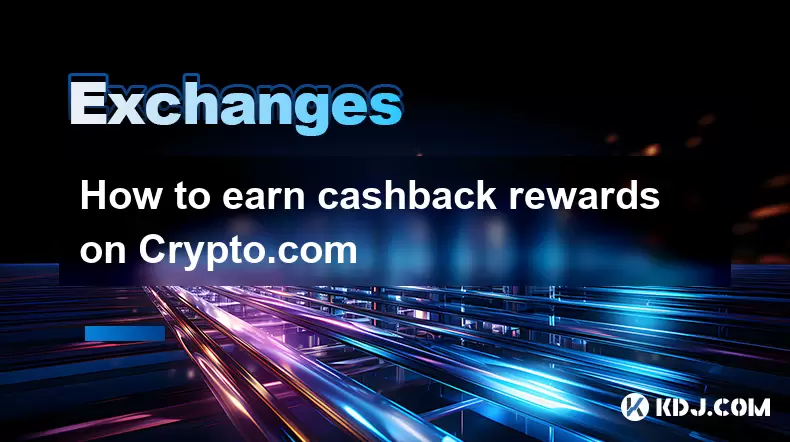-
 Bitcoin
Bitcoin $117600
0.25% -
 Ethereum
Ethereum $4424
0.10% -
 XRP
XRP $3.101
0.50% -
 Tether USDt
Tether USDt $1.001
-0.01% -
 BNB
BNB $836.2
1.26% -
 Solana
Solana $188.8
2.11% -
 USDC
USDC $1.000
0.01% -
 Dogecoin
Dogecoin $0.2301
0.57% -
 TRON
TRON $0.3485
-1.00% -
 Cardano
Cardano $0.9209
-1.34% -
 Hyperliquid
Hyperliquid $46.72
-1.19% -
 Chainlink
Chainlink $22.62
4.84% -
 Stellar
Stellar $0.4275
-0.38% -
 Sui
Sui $3.761
1.91% -
 Bitcoin Cash
Bitcoin Cash $586.7
-0.25% -
 Ethena USDe
Ethena USDe $1.001
0.01% -
 Hedera
Hedera $0.2510
2.06% -
 Avalanche
Avalanche $24.21
2.22% -
 Litecoin
Litecoin $119.7
1.07% -
 Toncoin
Toncoin $3.450
1.06% -
 UNUS SED LEO
UNUS SED LEO $9.411
-0.93% -
 Shiba Inu
Shiba Inu $0.00001298
1.20% -
 Uniswap
Uniswap $10.98
3.25% -
 Polkadot
Polkadot $3.961
2.16% -
 Dai
Dai $1.000
0.00% -
 Bitget Token
Bitget Token $4.642
0.95% -
 Cronos
Cronos $0.1514
0.57% -
 Ethena
Ethena $0.7290
3.78% -
 Monero
Monero $254.1
7.69% -
 Pepe
Pepe $0.00001102
2.47%
What are the strategies for Bybit grid trading? Practical operation analysis
Bybit's grid trading allows setting buy/sell orders at intervals within a price range, profiting from small price movements in volatile crypto markets.
May 09, 2025 at 03:08 pm

Grid trading on Bybit is a popular strategy among cryptocurrency traders looking to automate their trading and capitalize on market volatility. This strategy involves setting up a grid of buy and sell orders at predetermined price levels, allowing traders to profit from small price movements. In this article, we will explore the strategies for Bybit grid trading and provide a practical operation analysis.
Understanding Grid Trading
Grid trading is a strategy that involves placing buy and sell orders at regular intervals within a specified price range. The idea is to buy low and sell high within this range, profiting from the price fluctuations. Bybit offers a user-friendly platform for setting up grid trading strategies, making it accessible to both novice and experienced traders.
To start with grid trading on Bybit, traders need to understand the key components of a grid strategy. These include the upper and lower price limits, grid size, and profit target. The upper and lower price limits define the range within which the grid operates, while the grid size determines the number of buy and sell orders within that range. The profit target sets the desired profit level for each trade.
Setting Up a Grid Trading Strategy on Bybit
To set up a grid trading strategy on Bybit, follow these steps:
- Log in to your Bybit account: Ensure you have a funded account ready for trading.
- Navigate to the Grid Trading section: This can be found under the trading tools section of the Bybit platform.
- Select the trading pair: Choose the cryptocurrency pair you want to trade, such as BTC/USDT.
- Set the upper and lower price limits: Determine the price range within which you want your grid to operate. For example, if you believe the price of BTC will fluctuate between $30,000 and $35,000, set your upper limit to $35,000 and your lower limit to $30,000.
- Choose the grid size: Decide on the number of buy and sell orders you want within the price range. A larger grid size means more frequent trades but smaller profits per trade.
- Set the profit target: Define the profit you aim to achieve with each trade. This can be a fixed amount or a percentage of the investment.
- Review and confirm the settings: Double-check all the parameters before activating the grid trading strategy.
Types of Grid Trading Strategies
There are several types of grid trading strategies that traders can employ on Bybit. Each strategy has its own advantages and is suited to different market conditions.
- Range Grid Trading: This strategy is best used in a sideways market where the price fluctuates within a narrow range. Traders set up a grid within this range to profit from the small price movements.
- Trend Grid Trading: In a trending market, traders can use a trend grid strategy to capitalize on the overall direction of the market. The grid is set up to buy low and sell high within the trend, with the grid adjusted periodically to follow the trend.
- Volatility Grid Trading: This strategy is designed for highly volatile markets. Traders set up a wider grid to capture larger price swings, adjusting the grid size and profit targets to maximize profits from volatility.
Optimizing Grid Trading Parameters
To maximize the effectiveness of a grid trading strategy on Bybit, traders need to optimize the grid parameters based on market conditions and their trading goals. Here are some tips for optimizing grid trading parameters:
- Adjust the grid size: In a highly volatile market, a larger grid size can help capture more significant price movements. In a less volatile market, a smaller grid size may be more effective.
- Modify the profit target: Depending on the market conditions, traders may need to adjust their profit targets. In a trending market, a higher profit target may be appropriate, while in a sideways market, a lower profit target may be more achievable.
- Monitor and adjust the grid: Regularly review the performance of your grid trading strategy and make adjustments as needed. This may involve changing the upper and lower price limits, grid size, or profit target based on market movements.
Risk Management in Grid Trading
Risk management is crucial when employing a grid trading strategy on Bybit. While grid trading can be profitable, it also carries risks, particularly in highly volatile markets. Here are some risk management tips for grid trading:
- Set stop-loss orders: Use stop-loss orders to limit potential losses. If the market moves against your grid, a stop-loss order can help minimize losses by closing out positions at a predetermined level.
- Diversify your grid strategies: Instead of relying on a single grid strategy, consider diversifying across different trading pairs and grid setups. This can help spread risk and increase the chances of profitability.
- Monitor market conditions: Keep an eye on market conditions and be prepared to adjust or close your grid trading strategy if the market moves unfavorably. This may involve pausing the grid or adjusting the parameters to better suit the current market environment.
Practical Operation Analysis of Grid Trading on Bybit
To illustrate the practical operation of grid trading on Bybit, let's consider a hypothetical scenario. Suppose a trader wants to set up a grid trading strategy for the BTC/USDT pair, expecting the price to fluctuate between $30,000 and $35,000.
- Step 1: Log in to Bybit and navigate to the Grid Trading section.
- Step 2: Select the BTC/USDT trading pair.
- Step 3: Set the upper price limit to $35,000 and the lower price limit to $30,000.
- Step 4: Choose a grid size of 10, meaning 10 buy and sell orders will be placed within the price range.
- Step 5: Set the profit target to 1% per trade.
- Step 6: Review and confirm the settings.
Once the grid trading strategy is activated, Bybit will automatically place buy orders at $30,000, $30,500, $31,000, and so on up to $34,500. Sell orders will be placed at $30,500, $31,000, $31,500, and so on up to $35,000. As the price of BTC/USDT fluctuates within the range, the grid will execute trades, buying low and selling high to achieve the 1% profit target per trade.
Monitoring and Adjusting the Grid
As the market evolves, it's essential to monitor and adjust the grid trading strategy to maintain its effectiveness. Suppose the price of BTC/USDT starts to trend upwards, moving above $35,000. In this case, the trader may need to adjust the grid parameters as follows:
- Step 1: Pause the grid trading strategy.
- Step 2: Adjust the upper price limit to $37,000 to account for the upward trend.
- Step 3: Adjust the grid size to 12 to capture more significant price movements.
- Step 4: Increase the profit target to 1.5% per trade to take advantage of the trend.
- Step 5: Review and confirm the new settings.
- Step 6: Reactivate the grid trading strategy.
By regularly monitoring and adjusting the grid trading strategy, traders can adapt to changing market conditions and optimize their profitability.
Frequently Asked Questions
Q1: Can I use grid trading on Bybit for any cryptocurrency pair?
A1: Bybit supports grid trading for a variety of cryptocurrency pairs, including major pairs like BTC/USDT and ETH/USDT. However, not all pairs may be available for grid trading, so it's essential to check the platform's supported pairs before setting up a grid strategy.
Q2: What happens if the market moves outside the grid's price range?
A2: If the market moves outside the grid's price range, the grid will stop executing trades until the price moves back within the range. Traders can adjust the grid's upper and lower price limits to accommodate larger price movements or pause the grid and wait for the market to stabilize.
Q3: How often should I adjust my grid trading strategy?
A3: The frequency of adjustments depends on market conditions and the trader's strategy. In highly volatile markets, traders may need to adjust their grid more frequently to capture price movements. In more stable markets, adjustments may be less frequent. It's essential to regularly monitor the grid's performance and make adjustments as needed.
Q4: Can I use multiple grid trading strategies simultaneously on Bybit?
A4: Yes, Bybit allows traders to set up multiple grid trading strategies simultaneously, provided they have sufficient funds in their account. This can help diversify risk and increase the chances of profitability across different trading pairs and market conditions.
Disclaimer:info@kdj.com
The information provided is not trading advice. kdj.com does not assume any responsibility for any investments made based on the information provided in this article. Cryptocurrencies are highly volatile and it is highly recommended that you invest with caution after thorough research!
If you believe that the content used on this website infringes your copyright, please contact us immediately (info@kdj.com) and we will delete it promptly.
- Kazakhstan's Crypto Leap: Bitcoin ETF and Central Asia's Digital Finance Future
- 2025-08-13 12:45:19
- BlockDAG Presale Blazes Past $371M: Fundraising Frenzy Fuels Crypto Sensation
- 2025-08-13 13:05:21
- Meme Coins: Chasing the 2025 Surge – Which Will Moonshot?
- 2025-08-13 10:25:23
- Bitcoin's Wild Ride: Rally, Pullback, and What's Next
- 2025-08-13 10:25:23
- Bitcoin, Bitmax, and Institutional Demand: A New Era of Crypto Investment
- 2025-08-13 10:45:12
- Solana, ROAM, and Airdrops: What's the Buzz in 2025?
- 2025-08-13 11:35:13
Related knowledge

How to use margin trading on Poloniex
Aug 08,2025 at 09:50am
Understanding Margin Trading on Poloniex

How to read the order book on KuCoin
Aug 10,2025 at 03:21pm
Understanding the Order Book Interface on KuCoinWhen accessing the order book on KuCoin, users are presented with a real-time display of buy and sell ...

How to read the order book on KuCoin
Aug 12,2025 at 02:28am
Understanding the Basics of Staking in CryptocurrencyStaking is a fundamental concept in the world of blockchain and cryptocurrencies, particularly wi...

How to set price alerts on Kraken
Aug 11,2025 at 08:49pm
Understanding Price Alerts on KrakenPrice alerts on Kraken are tools that allow traders to monitor specific cryptocurrency pairs for price movements. ...

How to avoid high gas fees on Uniswap
Aug 13,2025 at 11:35am
Understanding Gas Fees on UniswapGas fees on Uniswap are payments made to Ethereum miners or validators for processing transactions on the blockchain....

How to earn cashback rewards on Crypto.com
Aug 12,2025 at 02:08am
Understanding Cashback Rewards on Crypto.comCashback rewards on Crypto.com are a feature designed to incentivize users to spend using their Crypto.com...

How to use margin trading on Poloniex
Aug 08,2025 at 09:50am
Understanding Margin Trading on Poloniex

How to read the order book on KuCoin
Aug 10,2025 at 03:21pm
Understanding the Order Book Interface on KuCoinWhen accessing the order book on KuCoin, users are presented with a real-time display of buy and sell ...

How to read the order book on KuCoin
Aug 12,2025 at 02:28am
Understanding the Basics of Staking in CryptocurrencyStaking is a fundamental concept in the world of blockchain and cryptocurrencies, particularly wi...

How to set price alerts on Kraken
Aug 11,2025 at 08:49pm
Understanding Price Alerts on KrakenPrice alerts on Kraken are tools that allow traders to monitor specific cryptocurrency pairs for price movements. ...

How to avoid high gas fees on Uniswap
Aug 13,2025 at 11:35am
Understanding Gas Fees on UniswapGas fees on Uniswap are payments made to Ethereum miners or validators for processing transactions on the blockchain....

How to earn cashback rewards on Crypto.com
Aug 12,2025 at 02:08am
Understanding Cashback Rewards on Crypto.comCashback rewards on Crypto.com are a feature designed to incentivize users to spend using their Crypto.com...
See all articles

























































































